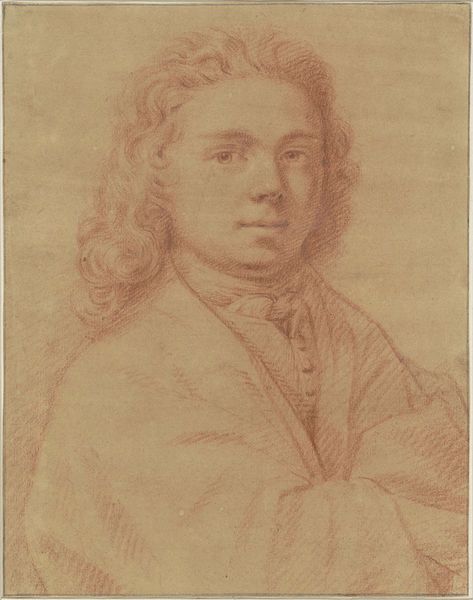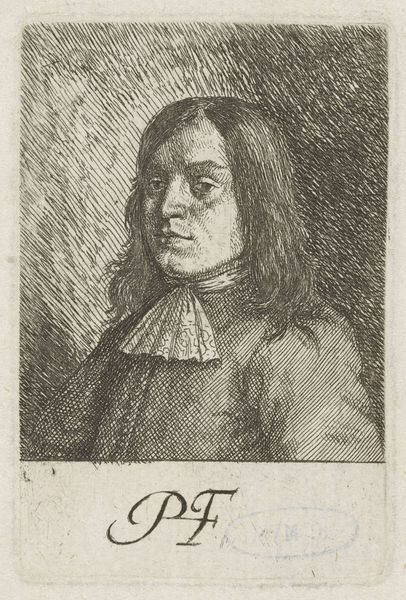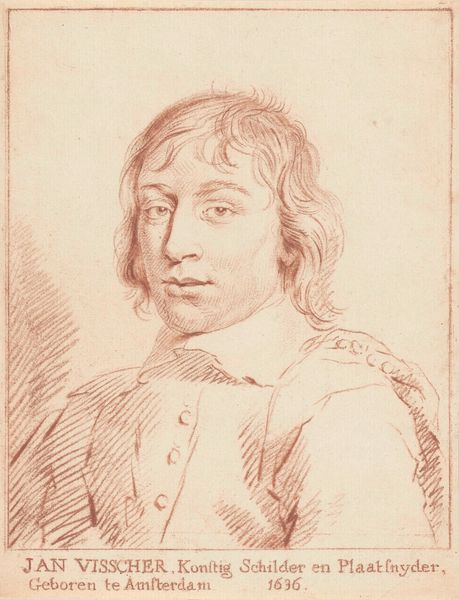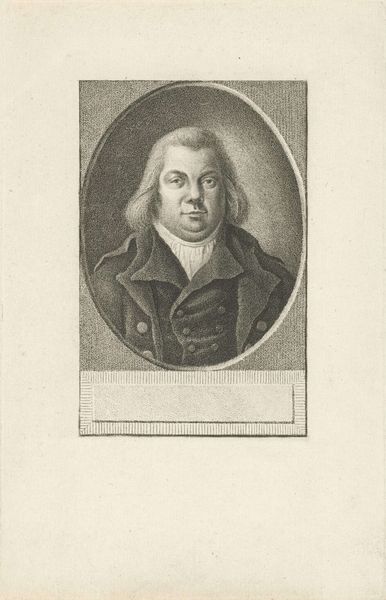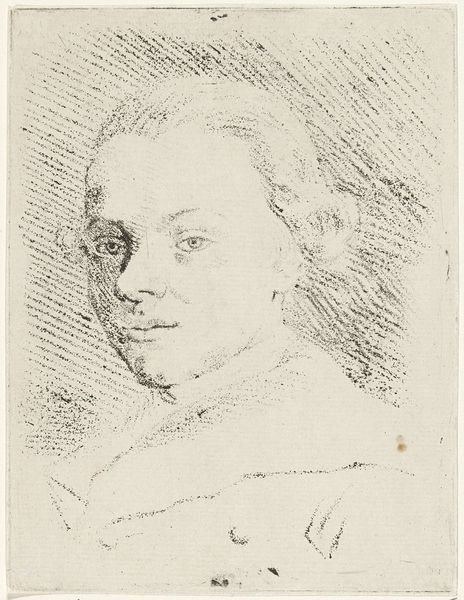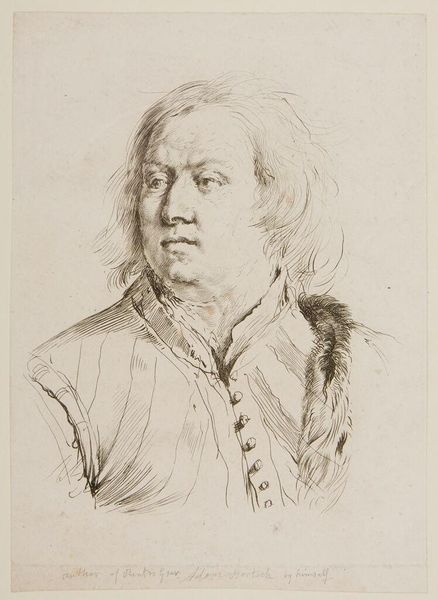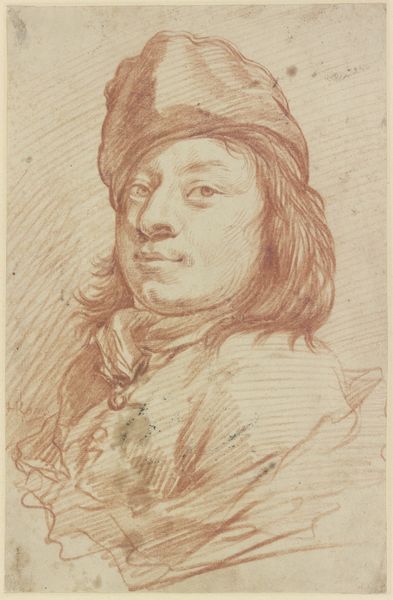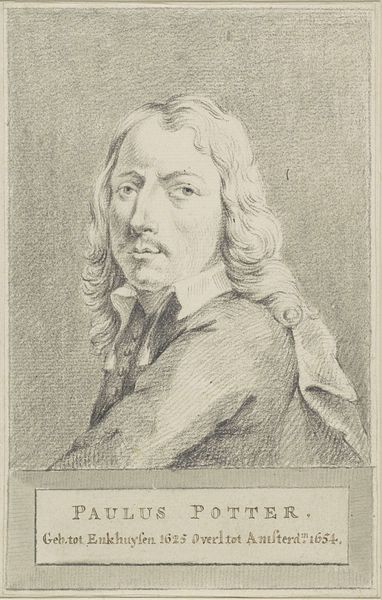
drawing, pencil
#
portrait
#
drawing
#
self-portrait
#
pencil drawing
#
pencil
#
rococo
Dimensions: height 169 mm, width 117 mm
Copyright: Rijks Museum: Open Domain
Curator: Before us, we have Aert Schouman’s “Zelfportret,” a self-portrait created sometime between 1720 and 1792. It’s a pencil drawing, currently held here at the Rijksmuseum. Editor: There's a certain softness to it, almost ethereal. The reddish-brown pencil lends a warmth, but there's also a hint of melancholy in the eyes. It feels quite intimate. Curator: Schouman was an important figure in the 18th century art world, known not just for his artistic skill but also for his involvement in art societies. Self-portraits like this one allowed artists to assert their identity and promote themselves within that competitive landscape. Editor: Notice how the artist used hatching to model the face and drapery. The light seems to fall from the left, creating a nice contrast and defining the planes of the face. The details around the eyes and mouth, however, could use some work. Curator: The act of creating a self-portrait held significant cultural weight. It was about demonstrating one's ability to capture a likeness and to present a carefully constructed image to the world. This was essential for cultivating patronage, establishing oneself in artistic circles, and maintaining that status. Editor: What is striking is the simplicity in it. There's a quiet confidence and introspection in the rendering, emphasized by the oval composition and relatively bare background. This allows the eye to focus on Schouman’s face, hair, and clothes—particularly the drawing tool he holds. Curator: Exactly. The Rococo style was all about elegance, grace, and decorative exuberance. This portrait showcases that to some extent, yet retains a natural quality that would appeal to art patrons looking for accessible images of people like Schouman. The incomplete oval line suggests that he had more to do or may have even been experimenting with composition. Editor: I'm struck by how immediacy has come from it. A sense of capturing a fleeting moment. Curator: This drawing really offers a glimpse into how artists of the period were strategically shaping their public image. Editor: It's intriguing to see such subtle expressive use of such minimal forms. Thank you for contextualizing it!
Comments
No comments
Be the first to comment and join the conversation on the ultimate creative platform.

